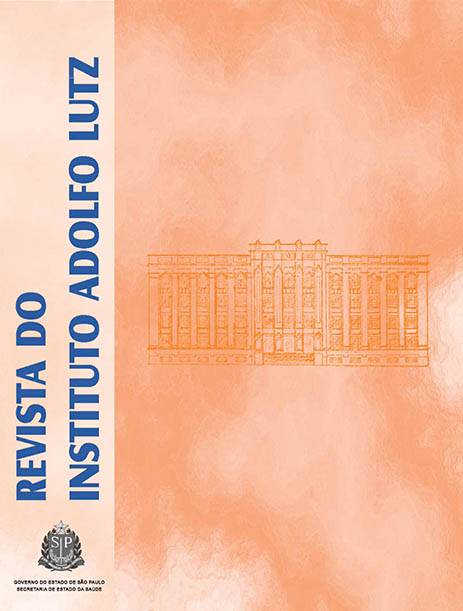Abstract
In the present study yerba mate-added cereal bars were produced, and their physicochemical and sensory characteristics were evaluated in order to assess the feasibility of this raw material as a new alternative for technological use. Four formulations of cereal bars were prepared, adding 0%, 5%, 10% and 20% of “chimarrão” yerba mate, which were analyzed on physicochemical aspects by determining moisture, ash, proteins, lipids and carbohydrates; and the characteristics of sensory acceptance of appearance, flavor, texture, overall impression attributes, and the purchase intention were investigated. The cereal bars containing 5% and 10% of yerba mate showed acceptability of approximately 70%. The formulation with 10% of yerba mate resulted in 9.13% of protein and 8.77% of lipids, and these values were higher and lower, respectively, than those found in the cereal bars marketed in the region. These healthy products containing higher nutritional value and lower fat contents comply with the requirements of the current consumer market. The formulations prepared and analyzed in this study show the feasibility of the use of yerba mate in the development of new food products.References
1. Baú TR, Cunha MAA, Cella SM, Oliveira ALJ, Andrade JT. Barra alimentícia com elevado valor proteico: formulação, caracterização e avaliação sensorial. Rev Bras Tecnol Agroind. 2010;4(1):42-51.
2. Brito IP, Campos JM, Souza TFL, Wakiyama C, Azeredo GA. Elaboração e avaliação global de barra de cereais caseira. Bol CEPPA.2004;22(1):35-50.
3. Freitas DGC, Moretti RH. Caracterização e avaliação sensorial de barra de cereais funcional de alto teor proteico e vitamínico. Ciênc Tecnol Aliment. 2006;26(2):318-24.
4. Gutkoski LC, Bonamigo JMA, Teixeira DMF, Pedó I. Desenvolvimento de barras de cereais à base de aveia com alto teor de fibra alimentar. Ciênc Tecnol Aliment. 2007;27(2):355-63.
5. Guimarães MM, Silva MS. Qualidade nutricional e aceitabilidade de barras de cereais adicionadas de frutos de murici-passa. Rev Inst Adolfo Lutz. 2009;68(3):426-33.
6. Dessimoni-Pinto NAV, Silva VM, Batista AG, Vieira G, Souza CR, Dumont PV, et al.Características físico-químicas da amêndoa de macaúba e seu aproveitamento na elaboração de barras de cereais. Aliment Nutr. 2010;21(1):77-84.
7. Peuckert YP, Viera VB, Hecktheuer LHR, Marques CT, Rosa CS. Caracterização e aceitabilidade de barras de cereais adicionadas de proteína texturizada de soja e camu-camu (Myrciaria dubia). Aliment Nutr. 2010;21(1):147-52.
8. Santos KA, Freitas RJSF, Santos MA, Rapacci M, Winter CMG. Polifenóis em chá de erva-mate. Nutr Brasil. 2004;3(1):47-50.
9. Efing LC, Caliari TK, Nakashima T, Freitas RJS. Caracterização química e capacidade antioxidante da erva-mate (Ilex paraguariensis st. Hil.). Bol CEPPA. 2009;27(2):241-6.
10. Esmelindro AA, Santos JG, Mossi A, Jacques RA, Dariva C. Influence of agronomic variables on the composition of mate tea leaves (Ilex paraguariensis) extracts obtained from CO2 extraction at 30 °C and 175 bar. J Agric Food Chem. 2004;52(7):1990-5.
11. Isolabella S, Cogoi L, López P, Anesini C, Ferraro G, Filip R. Study of the bioactive compounds variation during yerba mate (Ilex paraguariensis) processing. Food Chem. 2010;122:695-9.
12. Santos KA. Estabilidade da erva-mate (Ilex paraguariensis St. Hill.) em embalagens plásticas. [dissertação de mestrado em tecnologia de alimentos]. Curitiba (PR): Universidade Federal do Paraná; 2004.
13. Barboza LMV. Desenvolvimento de bebida à base de erva-mate (Ilex paraguariensis Saint Hilaire) adicionada de fibra alimentar. [tese de doutorado em tecnologia de alimentos]. Curitiba (PR): Universidade Federal do Paraná; 2006.
14. Berté KAS. Tecnologia da erva-mate solúvel. [tese de doutorado em tecnologia de alimentos]. Curitiba (PR): Universidade Federal do Paraná; 2011.
15. Heinrichs R, Malavolta E. Composição mineral do produto comercial da erva-mate (Ilex paraguariensis St. Hil.). Ciênc Rural. 2001;31(5):781-5.
16. Schmalko ME, Ramallo LA, Smorczewski M, Valdez EC, Paredes AM. Contenido de nutrientes em la yerba mate. Congresso Sul-Americano da Erva-Mate, 2000, Encantado. Anais do Congresso Sul-Americano da Erva-Mate. p. 74-5.
17. Berté KAS, Izidoro DR, Dutra FLG, Hoffmann-Ribani R. Desenvolvimento de gelatina funcional de erva-mate. Ciênc Rural. 2011;41(2):354-60.
18.Mello ACB, Freitas RJS, Waszczynskyj N, Koehler HS, WilleGMFC, Berté KAS. Bebida gaseificada de erva-mate. Bol CEPPA. 2009;27(1):19-26.
19.Campos RML, Hierro E, Ordóñez JA, Bertol TM, Terra NN, HozL. Fatty acid and volatile compounds from salami manufactured with yerba mate (Ilex paraguariensis) extract and pork back fat and meat from pigs fed on diets with partial replacement of maize with rice bran. Food Chem. 2007;103:1159-67.
20. Instituto Adolfo Lutz. Métodos físico-químicos para análise de alimentos. 4. ed. Brasília: Anvisa; 2005.
21. Brasil. Ministério da Saúde. Resolução RDC n. 360, de 23 de dezembro de 2003. Regulamento Técnico sobre Rotulagem Nutricional de Alimentos Embalados. Diário Oficial [da] Republica Federativa do Brasil. Brasília, DF, 26 dez 2003.
22. Teixeira E, Meinert EM, Barbetta PA. Análise sensorial de alimentos. Florianópolis (SC): Editora da UFSC; 1987.
23. Damodaran S, Parkin KL, Fennema OR. Química de alimentos de Fennema. 4. ed. Porto Alegre (RS): Editora ArtMed; 2010.
24. Gutkoski LC, Schulz JG, Sampaio MB, Silva DR. Avaliação de parâmetros físicos e químicos de marcas de erva-mate processadas em diferentes épocas. Bol CEPPA. 2001;19(1):95-104.
25. Lima JCR, Freitas JB, Czeder LP, Fernande DC, Naves MMV. Qualidade microbiológica, aceitabilidade e valor nutricional de barras de cereais formuladas com polpa e amêndoa de baru. Bol CEPPA. 2010;28(2):331-43.
26. Torres ER. Desenvolvimento de barra de cereais formuladas com ingredientes regionais. [dissertação de mestrado em engenharia de processos]. Aracaju (SE): Universidade Tiradentes; 2009.

This work is licensed under a Creative Commons Attribution 4.0 International License.
Copyright (c) 2012 Instituto Adolfo Lutz Journal
